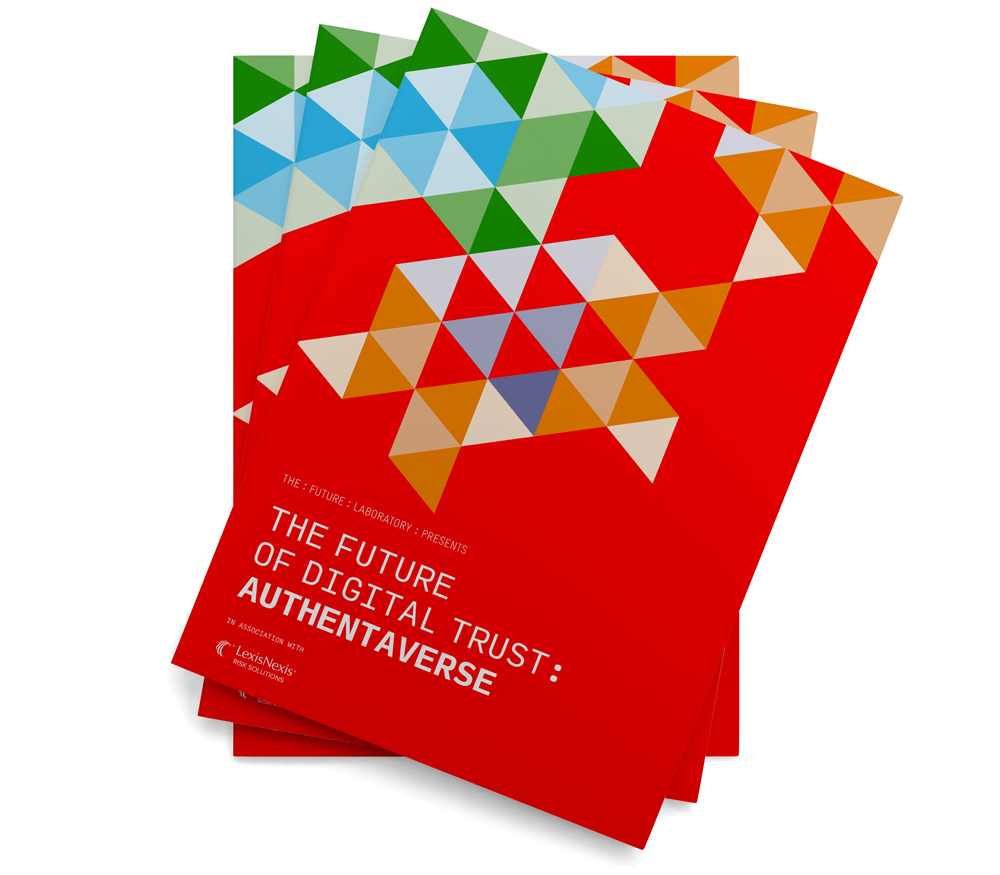
Building Digital Trust:
Shifting away from Rules-Based Identity & Verification
Banks and other financial service providers move beyond rules-based only IDV to establish digital trust, create a better CX and ensure future commercial survival.
Verifying a new customer’s identity when they open an account, or existing customer attempting to login to their account, is the point at which a host of questions must be answered in order for a brand to assign a trust tag to a customer.
While this a wholly sensible and necessary step in the identity verification journey, the level of friction that it creates has long been lamented by those responsible for monitoring application abandonment rates, or trying to create the optimal customer experience (CX) for their time-poor customers.
Systems have evolved along Knowledge Based Identity Verification (KB IDV) lines that require customers to provide information that they – and only they – should know. So that the two-way trusted transaction can take place.
However, this method of authenticating people has weaknesses, as people often share, lose, or unwittingly pass on this personal data or knowledge. This is one of the reasons why KB IDV-only solutions often find it challenging to address certain kinds of fraud.


Too much friction?
Another complicating factor is the sometimes misleading feedback customers can give regarding the level of IDV friction they are prepared to accept at sign up and log in.
When asked in isolation if they’re happy being taken through authentication steps to protect themselves and their accounts, most will affirm their full support. But all too often in practice when certain bits of knowledge have been forgotten, or misplaced, customers are very quick to abandon that position and become frustrated with a brand that isn’t providing the kind of seamless access to their accounts they want. Customers are also often unaware that their personal data has probably been shared or hacked in the past, on a platform that has nothing to do with the firm that their account is held with today.
This then presents a difficult conundrum around digital trust that would seem unsolvable – especially as expectations around instant and ‘always on’ access increase by today’s digitally native customers.
Double Negative?
The cost of damaging this kind of trust can be multifaceted. Finance firms report ‘abandonment’ rates as high as 60% (even higher in some cases) for some financial products, when customers are faced with lengthy IDV processes and forms at point of application. Additionally, if customers are repeatedly required to go through cumbersome IDV processes each and every time they attempt to process a transaction, the customer experience takes a negative hit. Over time this can also have an exponentially negative effect on how ‘trusted’ a brand is, “I know they say they are trying to protect my account, but do we have to go through this every time? Surely they know enough about me by now?!”.
This balance of two-way trust between a brand and its customer is essential, probably in financial services ‘the’ most important measure of future commercial success. A recent poll by Adobe put the scale of damage that broken trust could have on a brand with almost 71% of customers in the UK stating that they will stop dealing with a brand that has eroded their trust.
The future of trust
So it would seem essential that firms trying to address the KB friction versus slick CX balancing equation, look to other types of technology to help them achieve this balance. Ensuring that they are still able to protect their customers and themselves from malicious attacks, but at the same time finally deliver the type of trusted customer experience that digitally native Gen Z customers have been brought up to expect.
A recent report by The Future Laboratory and sponsored by LexisNexis risk Solutions, called The Future of Digital Trust: Authentaverse, discusses at length how a host of technologies are rapidly being deployed by those at the forefront of digital trust and identity verification to not only create a much more seamless and non-intrusive method of digital trust - but also make those systems far more robust, and less open to being breached, than a system based purely on customer-entered information could ever be.
'Most trusted'
A recent example of a sector which has been successful in transforming its ability to create a much more customer friendly, but safe, method of establishing digital trust is the UK banking industry. The recent LexisNexis Risk Solutions Cybercrime Report in the UK showed that when analysing malicious account attack attempts, banks are using layers of intelligence that incorporate things such as behavioural biometrics, device intelligence, phone network, and email profiling data to build a digital identity network and enable them to know when it was safe to trust a customer.
This example of companies using shared intelligence and combing it with layers of digital insight has enabled UK banks to become one of the most trusted entities in the UK in comparison to other sectors of society, the Cybercrime Report showed.
As firms get to grips with the fact that ‘trust’ is one measure of customer opinion that will determine their future commercial viability it's becoming more important than ever that they embrace this transition to deploying smart layers of technology and insight, that builds on shared eco-systems of trust-data, as the key to help them avoid their antiquated knowledge based-only systems derailing their attempts at building that customer trust in the future.


